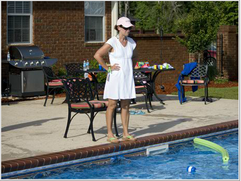
From: Water Safety USA
Each year Water Safety USA focuses on one key safety message. This is our current message.
Designate a water watcher when you are in, on, or around water.
Watch all children and adolescents swimming or playing in or around water, even if they know how to swim.
Young children or inexperienced swimmers need to be within arm’s reach of an adult at all times.
Make sure a responsible person constantly watches young children in the bath.
An Appropriate Water Watcher
- Is at least 16 years of age (adults preferred).
- Has the skills, knowledge, and ability to recognize and rescue someone in distress or can immediately alert someone nearby who has that capability.
- Knows CPR or can immediately alert someone nearby with that skill.
- Has a working phone to be able to dial 9-1-1.
- Has a floating and/or reaching object that can be used in a rescue.
- Is alert and not under the influence of drugs or alcohol.
Here’s Why
- Drowning is the second leading cause of unintentional injury deaths for children 1-14 years of age.
- Three children die every day as a result of drowning.
- Drowning kills more children 1-4 than anything else except birth defects.
- Most fatal drownings happen when there is poor or absent supervision.
- Drowning can happen quickly and quietly.
- Drowning can happen even in the presence of lifeguards.
More Information
- A water watcher is not a substitute for a lifeguard. Choose a lifeguard protected area if possible, AND designate a water watcher.
- Prevention is the key role of a water watcher. Don’t wait for an emergency. Encourage safe activities and stop any unsafe or risky behaviors.
- For any child who is a non-swimmer or lacks water competency skills, the water watcher should provide “touch supervision”, be close enough to reach the child at all times to grab the child.
- Because drowning can be quick and quiet, the water watcher should pay constant attention, be undistracted, not be involved in any other activity (such as reading, playing cards, talking on the phone, or mowing the lawn) while supervising children, even if lifeguards are present.
- Parents, caregivers, aquatic facility owners, managers and operators should use multiple “layers of protection” to ensure safety. Layers of protection include ensuring that:
> everyone learns to swim;
> unintended access to pools or other bodies of water is prevented by fencing or other barriers;
> U.S. Coast Guard approved lifejackets are used to aid inexperienced swimmers;
> all swimmers are closely, attentively, continuously, and redundantly supervised by water watchers and/or lifeguards;
> persons with the knowledge, skills and ability to safely effect a water rescue and initiate CPR are on site; and,
> emergency services can be alerted if needed (access to 911).

